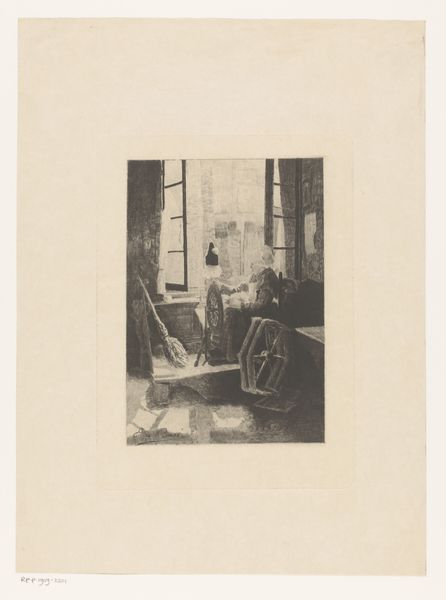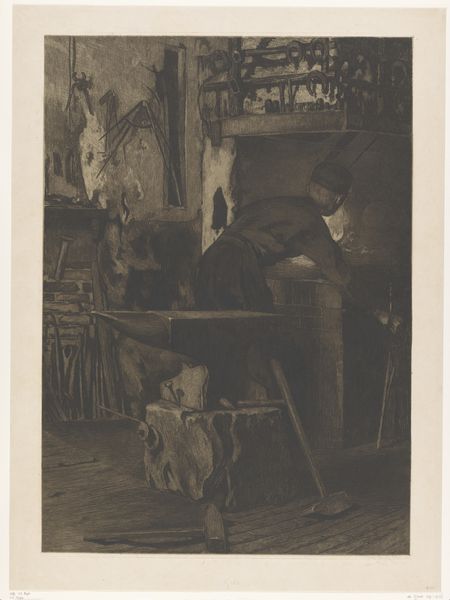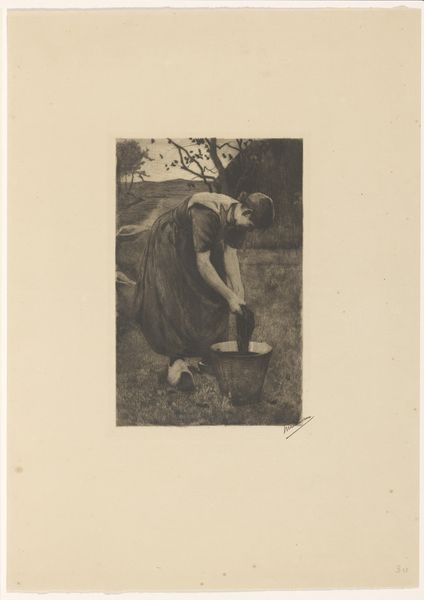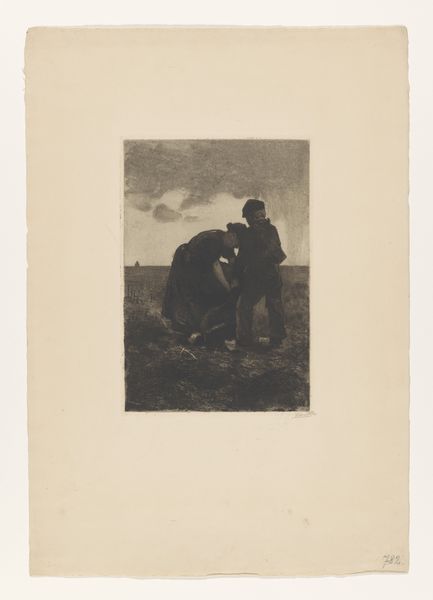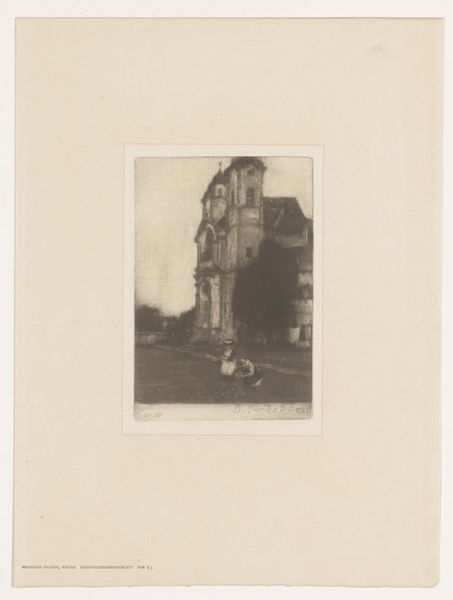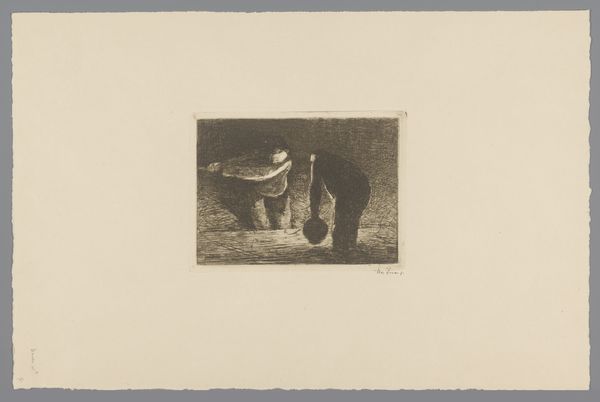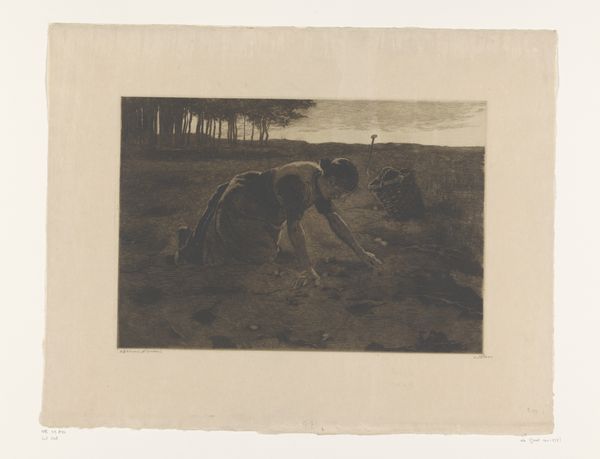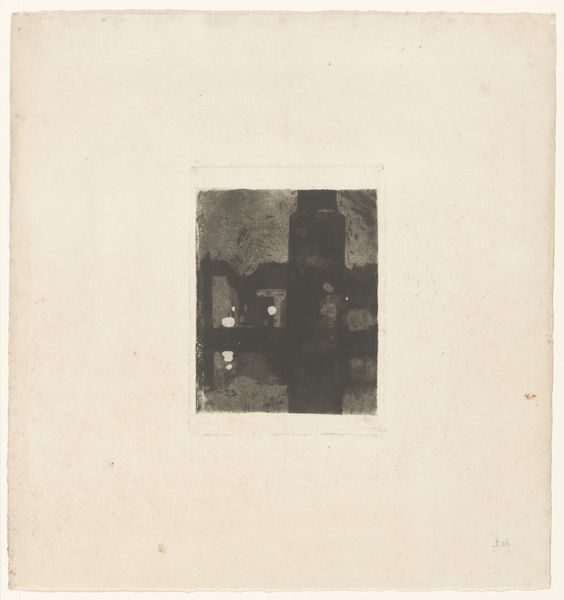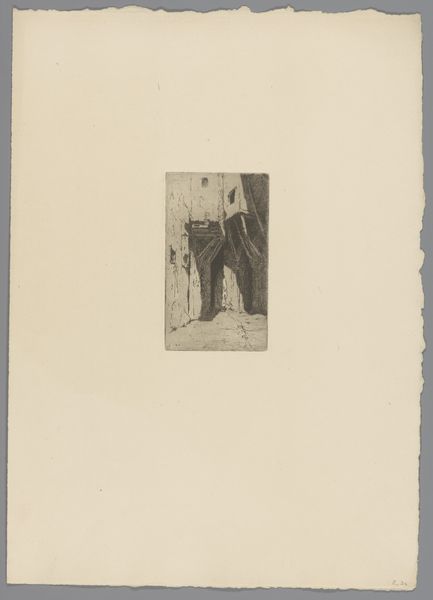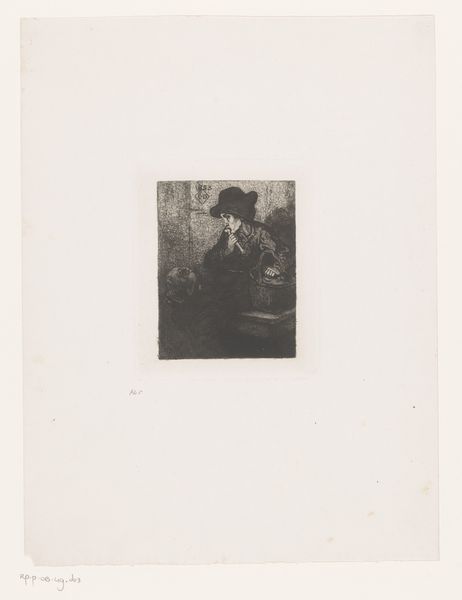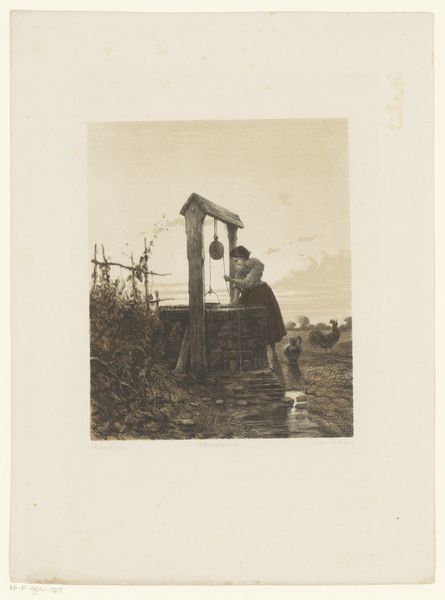
drawing, print, etching, paper
#
drawing
# print
#
etching
#
landscape
#
paper
#
genre-painting
#
realism
Dimensions: height 256 mm, width 179 mm
Copyright: Rijks Museum: Open Domain
Curator: This etching, dating to around 1888, is titled "Man die aan het wannen is," or "Man Winnowing" by Willem Witsen, and it is currently held in the Rijksmuseum. It’s a great example of Dutch Realism from that era. Editor: My first impression is of enclosed, hard labor, a solitary figure shrouded in a dimly lit workspace. The air looks heavy. Curator: It’s compelling to think about what that space represents beyond just the physical workshop, particularly for a man working to refine grain. The means of production here suggest the power dynamics at play and a stark reminder of labor as class. Editor: That is true, and beyond the socio-economic implications, the visual language here speaks to the elemental human activities related to sustenance. Grain winnowing has ancient roots across numerous cultures; it's almost primal, isn’t it? Curator: Absolutely. And if we consider the artistic climate of the time, this work stands as a conscious decision to depict everyday life rather than glorifying historical or mythological themes favored by the academy. This choice, this perspective, is inherently political. Editor: Seeing that he’s hunched over the task with limited resources evokes, for me, the timeless symbolism of survival through repetitive action, almost a Sisyphus scenario, but with bread at the end of it. The circle of labor and its fruits represented by grain are deeply resonant, tying to cycles of nature, death, and rebirth. Curator: Considering Witsen's circles in the art world, this piece feels like a departure and an endorsement of the under-represented workers, offering a view of labour that might have escaped those salon artists of the time. Editor: Ultimately, Witsen's piece speaks to a human experience far broader than any one political movement or aesthetic style. It distills work down to these near-universal and recurring forms. Curator: Exactly. Through this depiction, Witsen forces us to recognize that the narratives and historical relevance and implications reside in everyday, underrecognized stories and the means for daily bread. Editor: A beautifully humbling reminder, rendered in the soft light of enduring symbols.
Comments
No comments
Be the first to comment and join the conversation on the ultimate creative platform.

